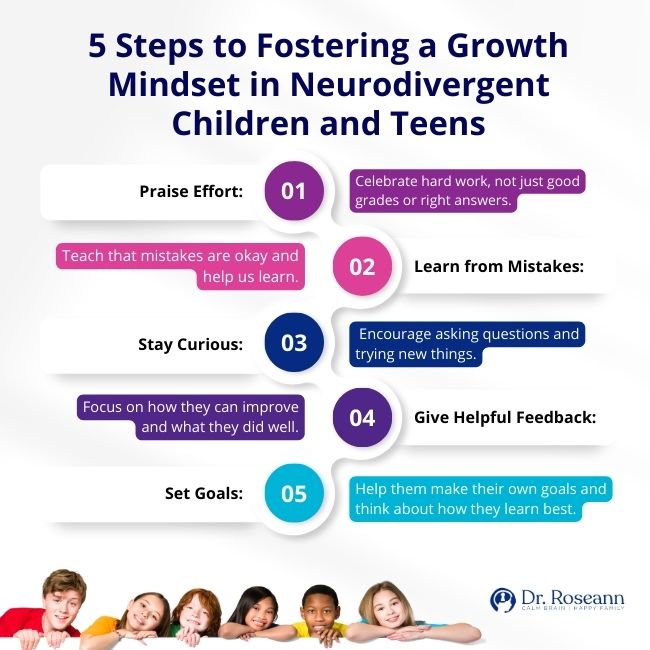Providing reading strategies for students with learning disabilities requires a thoughtful and customized approach. Patience, flexibility, and a variety of special needs teaching strategies for reading are essential. Let me guide you on how to teach reading skills to kids with reading comprehension learning disability.
My more than 30 years in clinical psychology allowed me to help dozens of children with dyslexia and reading strategies. Being a mom of dyslexics myself, I handcrafted these dyslexia reading strategies for special education students to provide step-by-step instructions for parents and educators to make teaching reading comprehension to students with learning difficulties easier and more efficient.
10 Steps on How to Improve Reading Skills in Students
Developing strong reading skills is essential for academic success and personal growth. As educators, parents, or individuals interested in enhancing reading abilities, there are various effective preschool to high school reading strategies to support students on their reading journey.
Here are the key methods to teach reading skills, which can be included in a special education reading curriculum. These are among the best reading strategies for teaching students with disabilities as they encompass everything from fostering a love for reading to implementing specific techniques that enhance comprehension and fluency.
Whether you're a parent or teacher looking to enhance your teaching approach or a parent seeking ways to support your child's literacy development, these steps provide a comprehensive guide to promoting effective reading habits and proficiency.Step 1: Assess Individual Needs
Before teaching reading strategies, it's crucial to assess each student's specific learning needs. Conduct assessments to identify their strengths, weaknesses, and preferred learning styles. Doing so will guide you to the development of effective content area reading strategies.
The use of evidence-based teaching strategies for students with intellectual disabilities is crucial for fostering meaningful and effective learning experiences (Spooner et al., 2012). Such an approach ensures that instruction is not only grounded in established best practices but also takes into account the individualized learning styles, strengths, and challenges of each student, promoting a more inclusive and supportive educational environment.
Step 2: Create a Supportive Learning Environment
Establish a positive and supportive atmosphere that promotes a love for reading. Ensure that the learning space is free from distractions, and provide materials that cater to various learning styles, such as visual aids, audiobooks, and interactive tools. These are reading comprehension strategies high school students will appreciate.
The majority of students with learning disabilities are taught through personalized and differentiated instructional approaches that often involve the use of individualized education plans (IEPs) that outline tailored strategies and accommodations to address each student's unique learning challenges.

Step 3: Choose Appropriate Reading Materials
Select reading materials that match the student's reading level and interests. Utilize books with clear fonts, ample spacing, and engaging content. Consider incorporating multimedia resources, as they can help support the reading comprehension disability of the child while promoting engagement.
Make sure that the student is using the prereading strategy of previewing the text, which involves skimming headings, subheadings, and captions, to gain a preliminary understanding of the content before delving into a more detailed reading. Doing this makes reading for students a lot easier.
Step 4: Implement Multi-Sensory Techniques
There are different methods of teaching reading and engaging students in multi-sensory activities to reinforce reading skills is one. Incorporate touch, sight, sound, and movement into lessons.
For example, use manipulatives, encourage finger tracing while reading, and integrate music or rhythm into the learning process. These strategies for reading with dyslexia are also effective for young learners.
Step 5: Break Down Reading Skills
Break down the reading process into manageable components, focusing on phonics, phonemic awareness, fluency, vocabulary, and comprehension. The reading method of developing targeted activities for each skill area to ensure a gradual and scaffolded progression works.
Step 6: Provide Explicit Instruction
Use explicit and systematic instructional methods for special education when teaching reading skills. Use clear and concise language, provide models, and offer ample opportunities for guided and independent practice. Effective teaching strategies for special education involve reinforcing concepts through repetition and positive reinforcement.
Step 7: Foster a Growth Mindset
Encourage a growth mindset by emphasizing effort, perseverance, and the belief that abilities can be developed over time. Celebrate small victories, and create a safe space for students to make mistakes and learn from them.
A positive attitude and a growth mindset will make the reading program for special education more impactful as it fosters a belief that abilities can be developed through dedication and hard work. This mindset not only encourages resilience in the face of challenges but also cultivates a love for learning. Students tend to embrace the reading program with enthusiasm and openness to new strategies and skills.

Step 8: Utilize Assistive Technology
Incorporate assistive technology tools and resources to support students with learning disabilities and reading comprehension problems. Audiobooks, text-to-speech software, and adaptive learning apps can enhance accessibility and engagement.
Including these tools in the reading curriculum for special education can give students tailored and differentiated support, addressing their unique learning needs and providing them with the necessary scaffolding to develop essential literacy skills at their own pace.
Step 9: Individualize Instruction
Tailor instruction to meet individual needs. Differentiate lessons based on each student's strengths, weaknesses, and learning preferences. Special Ed strategies such as offering additional support or challenges as needed, and regularly reassessing progress are crucial.
Step 10: Collaborate with Support Services
Work collaboratively with special education professionals and speech therapists to implement SPED strategies. Regular communication and collaboration can provide valuable insights, resources, and strategies for teaching students with learning disabilities.
The techniques of teaching reading to students with learning disabilities require a holistic and individualized approach. When it comes to developing different reading strategies for high schoolers, it’s important to assess their needs, create a supportive environment, and utilize a variety of good reading strategies. Sometimes, the use of IEP alone is not enough (Catone & Brady, 2005).
These will empower students to become confident and proficient readers. Consistent support, patience, and a commitment to ongoing assessment will contribute to the academic success of each learner.
Adapting research-based instructional strategies for students with learning disabilities is essential for providing effective and targeted support. These evidence-based approaches draw on validated research and proven methodologies to create a structured and supportive learning environment.
What is language experience?
Language Experience is an instructional approach that integrates reading, writing, listening, and speaking skills by using learners' language and experiences for literacy activities. This learning experience approach becomes the foundation for reading practice and language-related activities to promote a more personalized and engaging learning experience for the student.
What is the neurological impress method?
The Neurological Impress Method is one of the many reading techniques that entail both the teacher and the student reading aloud together from the same book. To maintain fluency, the teacher reads slightly faster than the student. Typically, the teacher positions themselves next to the student, directing their voice toward the student's ear.
What are the key components of a reading comprehension curriculum for special education?
A comprehensive reading comprehension curriculum for special education includes IEPs, differentiated instruction, and explicit teaching methods to address diverse learning needs. Multisensory learning, graphic organizers, and technology integration enhance engagement, while ongoing assessment and progress monitoring guide tailored support.
What are the best teaching strategies for LD students?
Effective instructional strategies for students with disabilities involve individualized approaches such as multisensory instruction, differentiated learning, and explicit instruction to address diverse needs. These student ready strategies will also benefit from collaborative learning, structured environment, and individualized education plans.
What are concrete examples of reading strategies for middle school?
Special education instructional strategies for middle school students include previewing texts, questioning, and visualizing to activate prior knowledge and enhance comprehension. Encouraging annotation, facilitating small group discussions, and incorporating digital tools promote active engagement and critical thinking.
What is oral / written language disorder and specific reading comprehension deficit?
Oral and written language disorders (OWLs) encompass challenges in spoken and written expression, with oral language disorder involving difficulties in verbal communication and written language disorder involving challenges in written expression. Specific reading comprehension deficit refers to difficulties in understanding and interpreting written text despite adequate word recognition skills, involving challenges such as making inferences and summarizing information.
Citations
Catone, W. V., & Brady, S. A. (2005). The inadequacy of individual educational program (IEP) goals for high school students with word-level reading difficulties. Annals of Dyslexia, 55(1), 53–78. https://doi.org/10.1007/s11881-005-0004-9
Spooner, F., Knight, V. F., Browder, D. M., & Smith, B. R. (2012). Evidence-Based Practice for Teaching Academics to Students with Severe Developmental Disabilities. Remedial and Special Education, 33(6), 374–387. https://doi.org/10.1177/0741932511421634
Dr. Roseann is a mental health expert in Learning Disorder who frequently is in the media:
- Business Insider Your kids could get the coronavirus when they go back to school. These are the risks and benefits to weigh before sending them.
- CBS (Video) Learning From Home During Quarantine
- CBS (Video) Student Learning Resources Quarantine
Always remember… “Calm Brain, Happy Family™”
Disclaimer: This article is not intended to give health advice and it is recommended to consult with a physician before beginning any new wellness regime. *The effectiveness of diagnosis and treatment vary by patient and condition. Dr. Roseann Capanna-Hodge, LLC does not guarantee certain results.
Are you looking for SOLUTIONS for your struggling child or teen?
Dr. Roseann and her team are all about science-backed solutions, so you are in the right place!
Grab your complimentary copy of
147 Therapist-Endorsed Self-Regulation Strategies for Children: A Practical Guide for Parents
Dr. Roseann is a Children’s Mental Health Expert and Licensed Therapist who has been featured in/on hundreds of media outlets including The Mel Robbins Show, CBS, NBC, PIX11 NYC, Today, FORBES, CNN, The New York Times, The Washington Post, Business Insider, Women’s Day, Healthline, CNET, Parade Magazine and PARENTS. FORBES called her, “A thought leader in children’s mental health.”

She coined the terms, “Re-entry panic syndrome” and “eco-anxiety” and is a frequent contributor to media on mental health.
Dr. Roseann Capanna-Hodge has three decades of experience in working with children, teens and their families with attention-deficit hyperactivity disorder (ADHD), autism, concussion, dyslexia and learning disability, anxiety, Obsessive Compulsive Disorder (OCD), depression and mood disorder, Lyme Disease, and PANS/PANDAS using science-backed natural mental health solutions such as supplements, magnesium, nutrition, QEEG Brain maps, neurofeedback, PEMF, psychotherapy and other non-medication approaches.
She is the author of three bestselling books, It’s Gonna Be OK!: Proven Ways to Improve Your Child's Mental Health, The Teletherapy Toolkit, and Brain Under Attack. Dr. Roseann is known for offering a message of hope through science-endorsed methods that promote a calm brain.
Her trademarked BrainBehaviorResetⓇ Program and It’s Gonna be OK!Ⓡ Podcast has been a cornerstone for thousands of parents facing mental health, behavioral or neurodevelopmental challenges.
She is the founder and director of The Global Institute of Children’s Mental Health, Neurotastic™Brain Formulas and Dr. Roseann Capanna-Hodge, LLC. Dr. Roseann is a Board Certified Neurofeedback (BCN) Practitioner, a Board Member of the Northeast Region Biofeedback Society (NRBS), Certified Integrative Mental Health Professional (CIMHP) and an Amen Clinic Certified Brain Health Coach. She is also a member of The International Lyme Disease and Associated Disease Society (ILADS), The American Psychological Association (APA), Anxiety and Depression Association of America (ADAA) National Association of School Psychologists (NASP), International OCD Foundation (IOCDF).
© Roseann-Capanna-Hodge, LLC 2024










